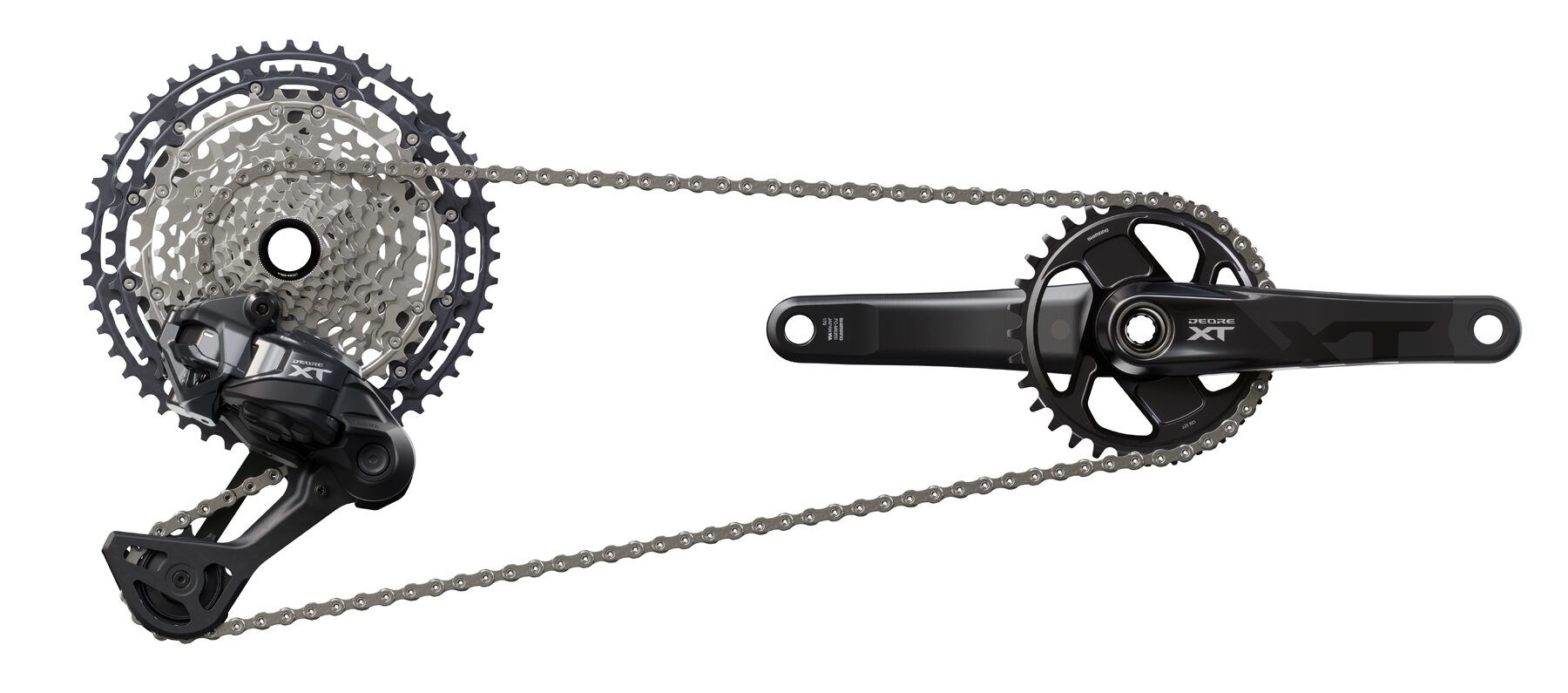
Intro
Shimano has a long history of launching their latest mountain bike groupsets at the top-tier XTR level, and then trickling down the designs to their more affordable groups.
Given that, it’s no surprise that more affordable versions of Shimano’s new Di2 wireless shifting were in the works, but they’ve come a lot sooner than folks might have guessed.
Shimano now has Deore and XT versions of Di2 wireless shifting, plus new XT brakes and wheels to go with them. We’ve put together a separate post for the new XT brakes, but here, we’ll cover all the details of the new Deore and XT Di2 drivetrain components.
[Note: Shimano doesn’t have plans to launch an SLX version of the Di2 groups, but will continue to support their existing mechanical ones (including Deore and XT) for the foreseeable future. There’s also a lot of cross-compatibility between the mechanical versions and the new wireless ones, as we’ll cover in more detail below.]
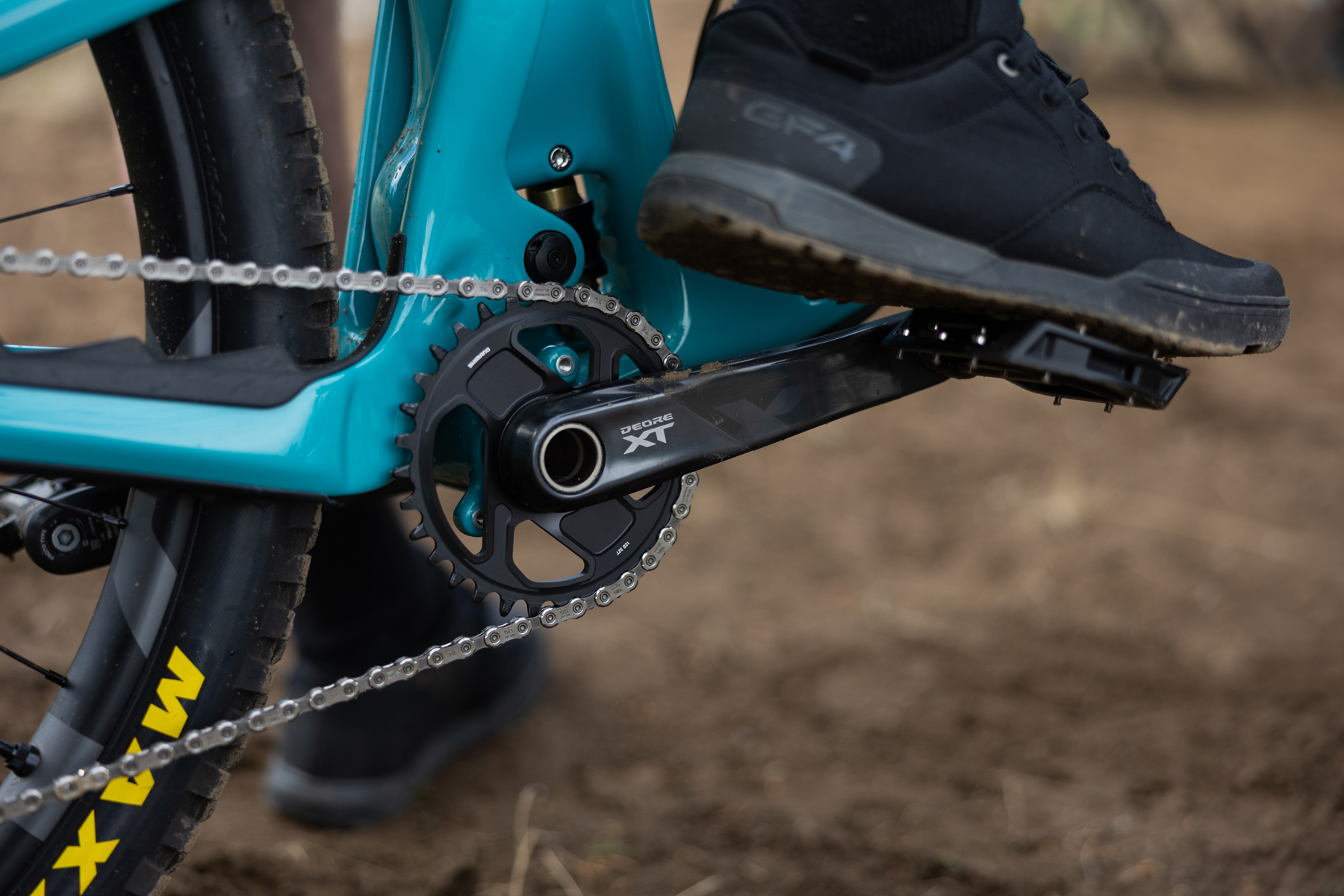
Deore & XT Di2 Derailleurs — Overview
The new Deore and XT Di2 derailleurs share very similar designs and features to the XTR ones that we covered in our Full Review of the XTR M9200 group.
The main differences are that the Deore and XT derailleurs get less exotic materials and construction to save cost; the Deore group also gets fewer options for derailleur versions. We’ll cover those details in a minute, but let’s start with what all three tiers have in common.
The overall form factor of the Deore, XT, and XTR derailleurs is essentially identical; visually, they mostly differ in finish and branding, with some subtle differences in the shape of the parallelogram plates.
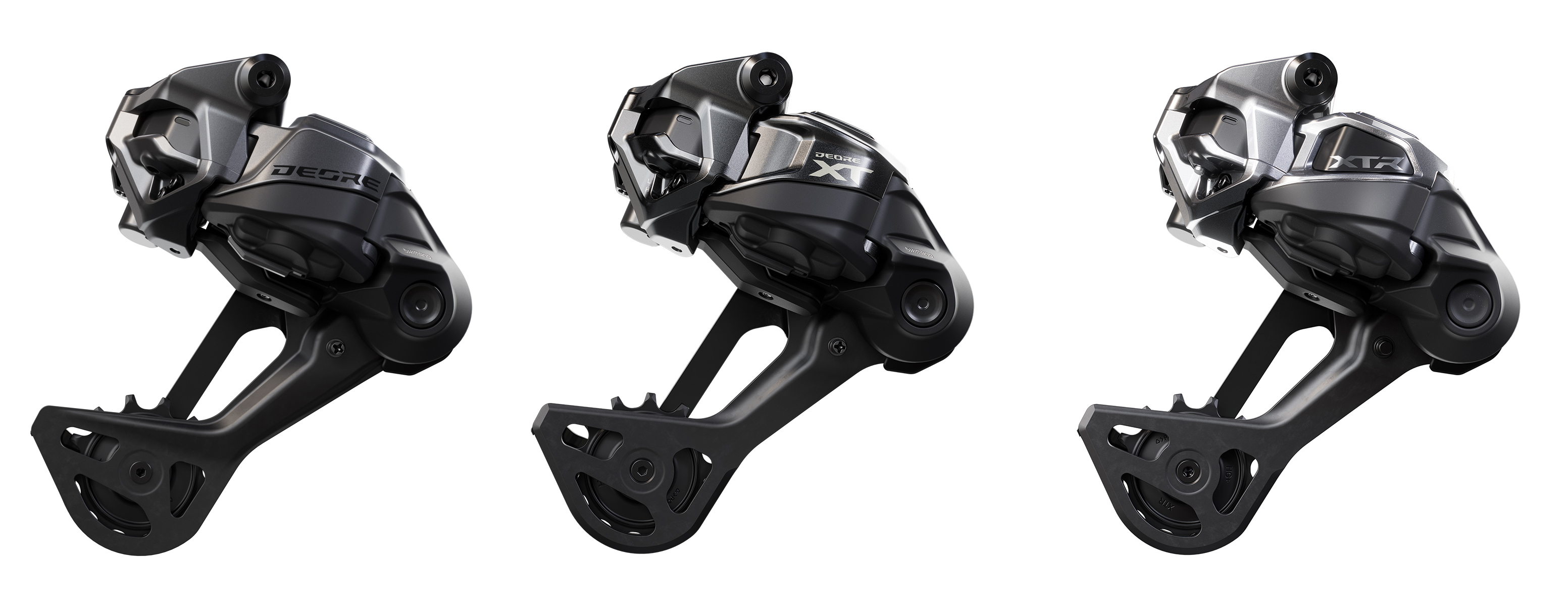
They mount to a standard derailleur hanger, rather than going to a direct-mount design a-la SRAM Transmission; Shimano says they chose a traditional hanger for derailleur durability reasons. Here’s what we wrote about that in our review of the XTR version, all of which applies to the Deore and XT versions as well:
Shimano’s take is that a derailleur hanger is still important to protect the derailleur from certain types of damage (e.g., falling straight down onto a rock), and that maintaining the ability for the derailleur to rotate rearward on its mounting bolt is also valuable.
[For reference, SRAM’s T-Type derailleurs can rotate rearward, too, but the mounting interface introduces a lot more friction in that pivot than there is with a normal derailleur hanger mount. That means that a T-Type derailleur doesn’t move as freely and can get stuck back if you hit it on something, requiring you to get off the bike and reset it.]
Shimano has emphasized derailleur durability and has come up with some interesting design details to meet that goal.
The battery (on versions that feature one — more on that below) is nestled in the middle of the parallelogram and is secured with a slide-on hatch. The motor and gearbox are housed at the back of the derailleur, where they’re shielded from impact damage.
The new derailleurs include an automatic recovery feature, whereby it can get pushed inboard (i.e., as if performing a downshift) by an obstacle without overloading and breaking the motor / gearbox. The derailleur then shifts itself back to the selected gear once it’s clear of the obstacle.
Shimano has also substantially slimmed down the P-knuckle (the forward part of the parallelogram where the cage mounts) of the new derailleur, and made it much more wedge-shaped to help it deflect off obstacles more effectively. Doing so required redesigning the friction clutch that manages cage / chain movement on their mechanical derailleurs — to the point that it’s no longer a clutch at all.
Shimano refers to the new system as a “stabilizer,” since it uses a pair of springs rather than a clutch to slow the movement of the cage and keep chain slap in check. Shimano says that the spring-based stabilizer also requires no maintenance and won’t experience any performance degradation as it wears, unlike a friction-clutch-based system. The new design is also claimed to increase chain tension by about 70% (it varies a bit depending on the gear) for improved chain wrap and less chance of skipping, even with a well-worn cassette.
The new derailleurs are also compatible with Shimano’s existing wireless Di2 drop-bar and Cues shifters if you want to mix and match.
As with the XTR Di2 derailleur, the Deore and XT ones get beefed-up cages compared to their mechanical counterparts. The wireless versions also use solid pulleys to help prevent sticks and debris from getting stuck in them. The derailleur cages also fully cover the lower pulley to help out there.
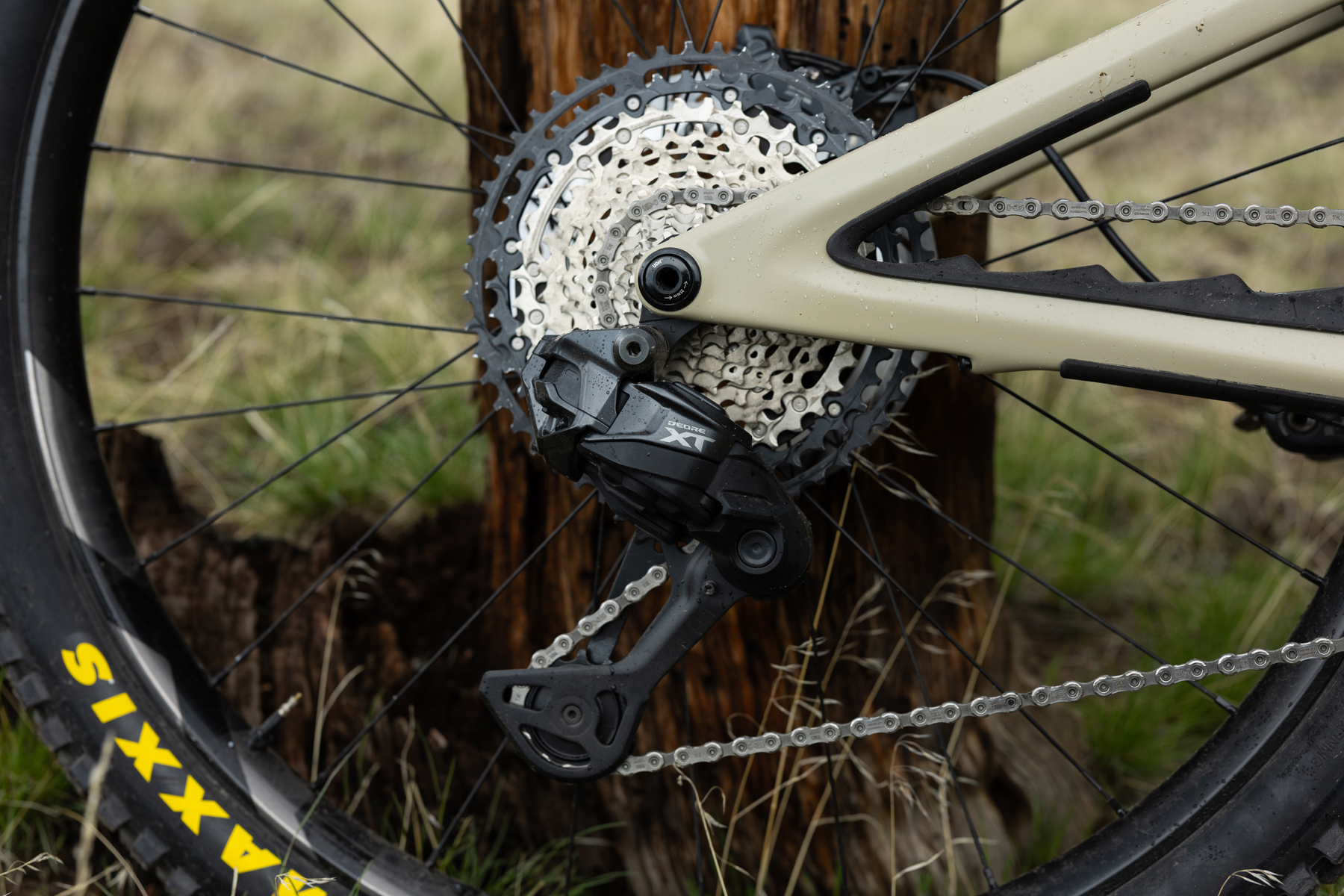
The new Deore and XT Di2 derailleurs are both offered in battery-powered versions and wired ones for eMTB use (the latter use the eMTB’s main drive system battery for power instead of a standalone battery). You can run one of the battery-powered derailleurs on an eMTB if you’d like, but you can’t add a battery to the wired ones.
The battery-powered derailleurs use the same battery across all variants (Deore, XT, and XTR). The battery is removable and charges on a cradle-style charger much like SRAM’s AXS systems, and Fox’s Live Valve Neo ones. Shimano says that the battery’s charge should be good for ~210 miles of riding (depending on shift frequency, of course).
XT Derailleur Versions
The XT derailleurs use an aluminum cage instead of the carbon fiber outer / aluminum inner plate version on the pricier XTR derailleurs.
In terms of top-line features, that’s the only real difference, though we’d assume there are some more subtle construction / material tweaks elsewhere to cut cost, as was the case on prior-generations of XT / XTR derailleurs, though the details of those aren’t specified.
Shimano’s stated weights for the XT derailleurs are about 60 grams heavier than the comparable XTR versions.
XT M8250 Derailleurs
- MSRP: $570 (Derailleur only; Battery: $55 / Charger: $45)
- Stated Weight: 451 g (GS short cage) / 454 g (SGS long cage) + 26.5 g (Battery)
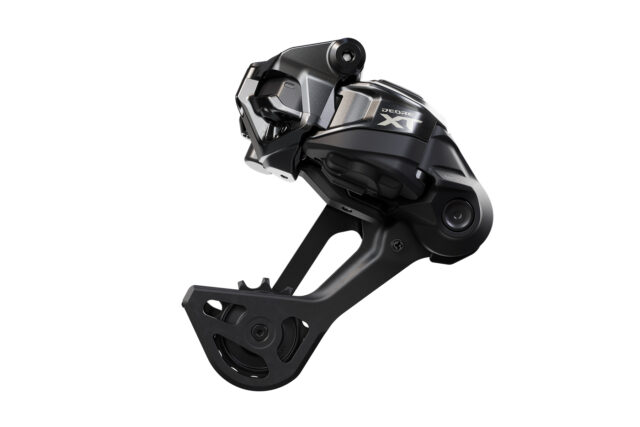
XT M8260 eMTB Derailleurs
- MSRP: $570
- Stated Weight: 427 g (both versions)
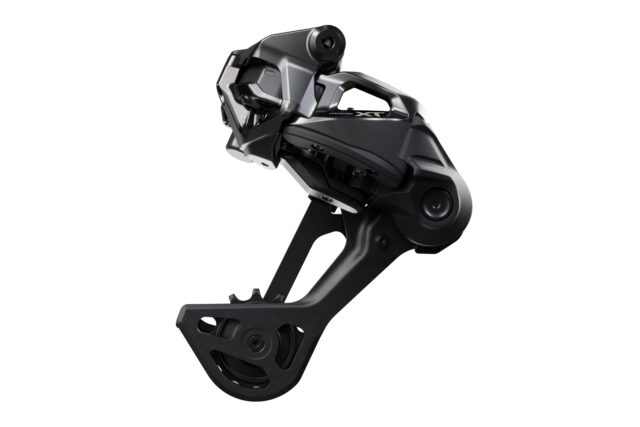
The new XT eMTB derailleurs also get the same options as the XTR eMTB variants, which use a wired connection to the eMTB’s main battery for power instead of having their own dedicated power source.
Both the XT and XTR eMTB derailleurs feature a long (SGS) cage; the difference is that one (RD-M8260-12) is designed for 12-speed Hyperglide+ and the other (RD-M8260-11) works with 11-speed Linkglide cassettes and chains.
Shimano’s take is that the 12-speed version will be the main OE option offered on complete eMTBs, with the 11-speed Linkglide setup offered aftermarket for folks who want a more durable chain and cassette at the expense of one gear and less smooth shifting. Adapters are available to plug the derailleur into eMTB drive systems from Shimano, Bosch, and TQ; support for more drive systems is planned in the future.
Both the eMTB versions support Free Shift (pulsing the main drive motor to allow for shifting while coasting) and Auto Shift (automatic gear selection based on cadence and other factors), both of which can be toggled on or off in Shimano’s E-Tube app. There’s also no reason you can’t run the standard M8250 derailleur on an eMTB (with a HG+ 12-speed cassette and chain) if you’d prefer. You cannot add a battery to the wired eMTB derailleurs, however.
Deore Derailleur Versions
Deore M6250 Derailleur
- MSRP: $435 (Derailleur only; Battery: $55 / Charger: $45)
- Stated Weight: n/a (Derailleur) + 26.5 g (Battery)
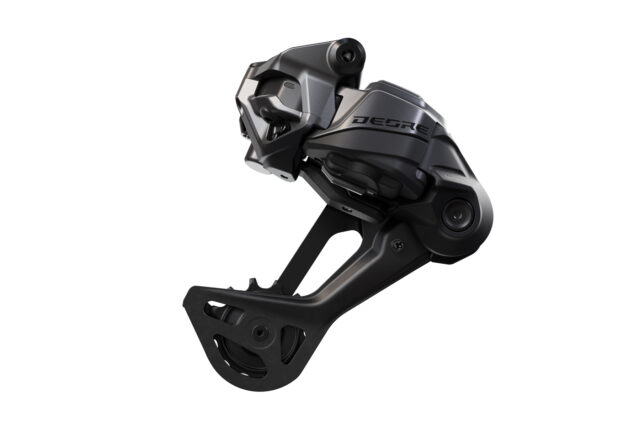
Deore M6260 eMTB Derailleurs
- MSRP: $435
- Stated Weight: n/a
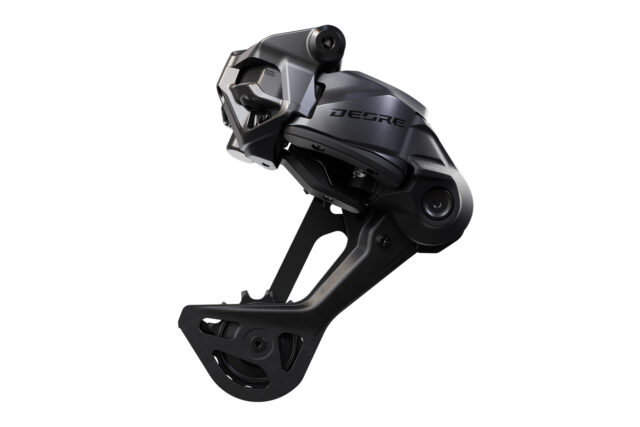
Deore & XT Di2 Shifters — Overview
The XTR M9200 shifter is a particular highlight of that group in my book (check out our Full Review for more on that), so I’m glad to see that the Deore and XT variants also get very similar designs, albeit with fewer features.
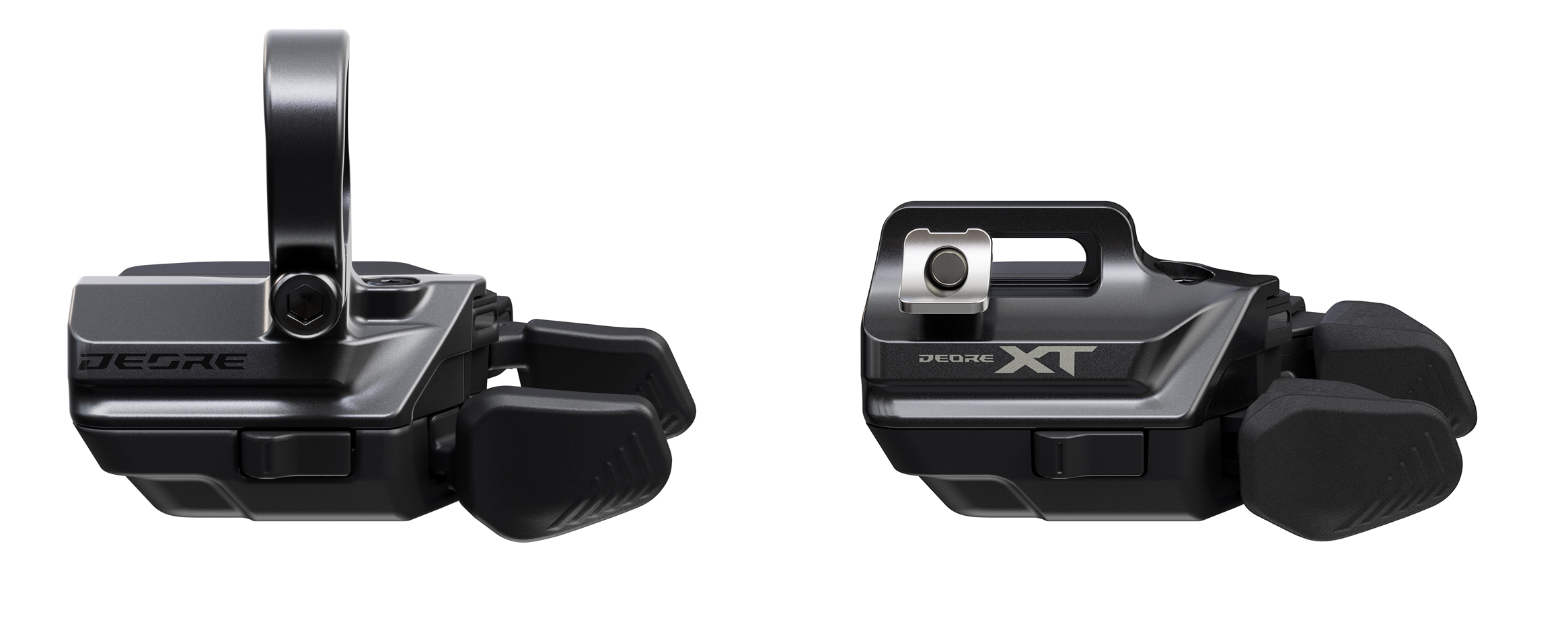
Shimano opted to make their wireless shifters feel and function much like conventional mechanical ones, with excellent results. We’ll get into the differences in a moment, but first, here’s how we described the layout of the XTR Di2 shifter (the layout is shared with the Deore and XT versions):
The Di2 wireless shifters use two thumb-actuated paddles, with distinct clicks for each press. By default, the higher, more rearward paddle shifts your gears down, and the lower, more forward one shifts up, but the mapping is reversible in the phone app if desired.
Thanks to their electronic adjustability, the new Di2 shifters open up a lot of possibilities for customization. There’s a lot to cover, but we’ll do our best to detail the highlights with some degree of brevity.
The Di2 shifters offer a number of options for “multi-shift” functionality, which tells the derailleur to shift multiple gears if you hold down the paddle, within certain customizable parameters. Here’s the short version of the options:
- Multi-shift disabled. The derailleur shifts once per click of the shifter.
- Multi-shift enabled. The derailleur can shift multiple gears per click on the shifter, with several customizable options.
- The number of gears shifted per multi-shift event can be set to unlimited (i.e., the derailleur will shift across the entire cassette if you hold the paddle down long enough) or to only allow either two or three shifts for each time you perform a multi-shift.
- The speed at which the derailleur shifts in multi-shift mode is customizable with five different settings (very slow, slow, normal, fast, and very fast). Separately, there is a dedicated e-bike mode that limits how quickly you can shift across multiple gears to avoid drivetrain damage. All of the same multi-shift options are still available, but the derailleur will limit how quickly it executes multiple shifts to preserve the chain and cassette.
The Di2 shifters are powered by two CR1632 coin cell batteries and are available in both standalone clamp and I-Spec EV integrated mount versions.
There’s also a third button on the face of the shifter, which defaults to putting the shifter into “trim mode” with a long press (i.e., working like a barrel adjuster on a mechanical shifter). In trim mode, the shift paddles make slight adjustments to the derailleur alignment relative to the cassette, rather than performing full shifts. A second long press of the third button reverts the shifter to its regular shift mode.
The third button can also be reprogrammed through the phone app to perform a variety of other functions, including controlling eMTB assist levels or toggling through displays on a Garmin head unit. Shimano says that they’ve left the protocol open for other manufacturers to implement, but it’s only compatible with Shimano drive systems and Garmin head units for now.
XT M8250 Di2 Shifter
- MSRP: $190
- Stated Weight: 97 g (I-Spec EV Integrated Mount) / 104 g (Standalone Clamp Mount)
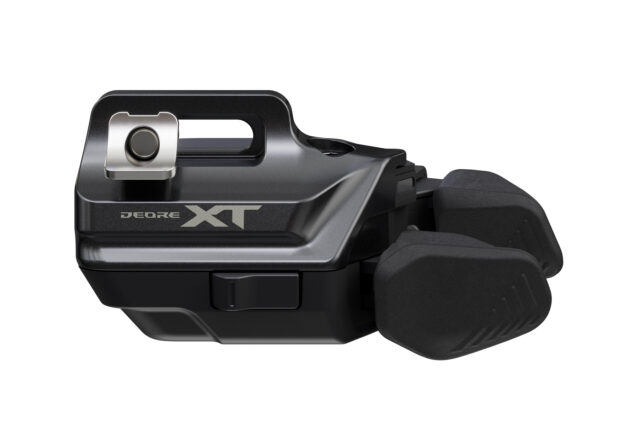
Like the XTR version, the XT Di2 shifter features two clicks per sweep of each paddle, both with clear detents, the second of which is appreciably firmer than the first. Again mirroring the XTR shifter, the paddles on the XT one are mounted on versions of a ball-and-socket joint, which allows you to independently change their position and orientation. A bolt behind each paddle locks it into place; with the bolt loose, you can move the paddle as desired. Moving the paddle does not change the direction in which it moves, just the starting position and angle of the paddle.
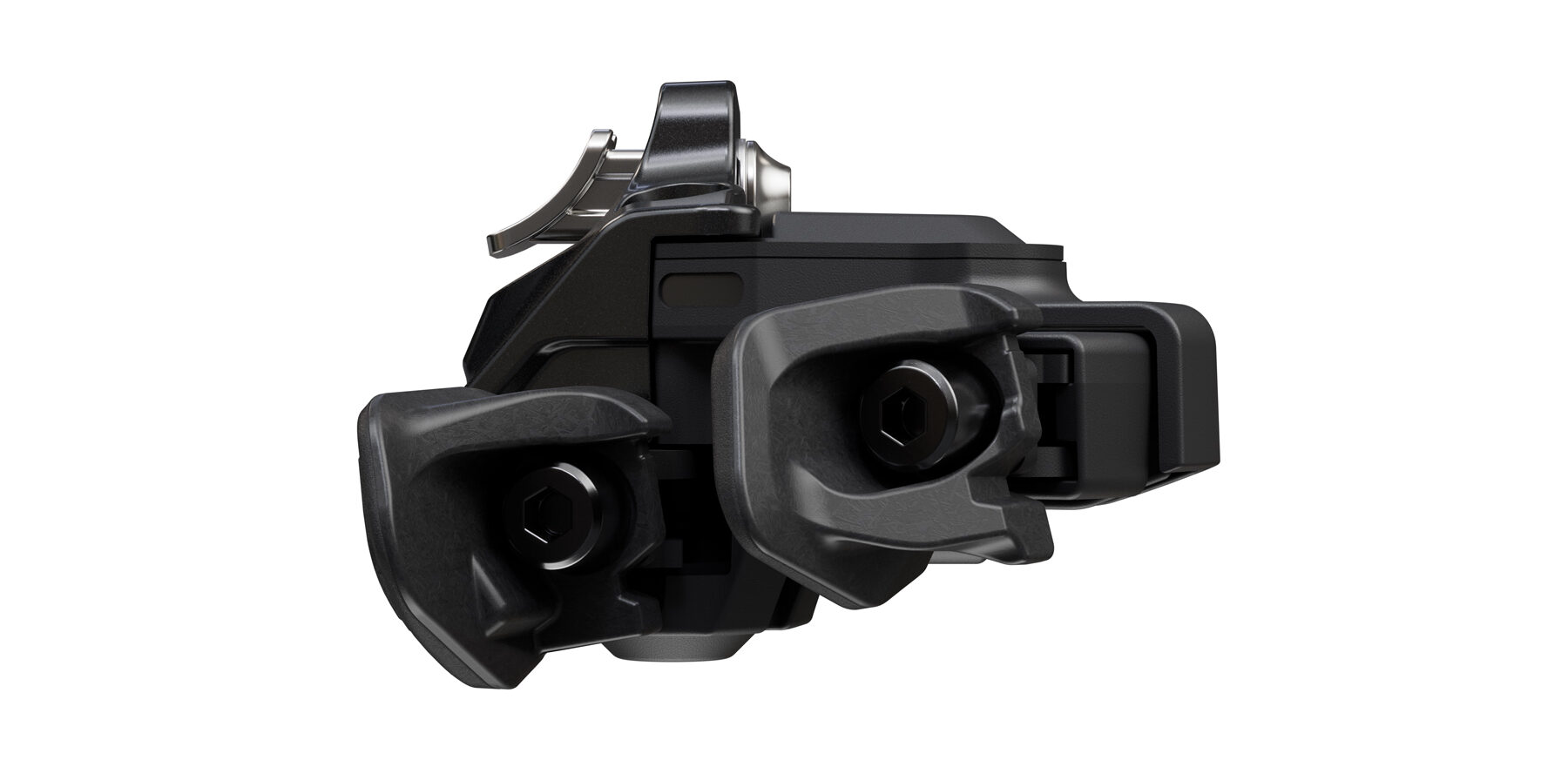
The main difference between the XT and XTR shifters is that the XT variant loses the ability to physically block off the second click on both paddles if desired. The XTR shifter has a quarter-turn screw on its underside that limits both paddles to a single click in unison; the XT shifter only gets the two-click mode.
You can, however, program the XT shifter to ignore the second click on one or both of the paddles through Shimano’s phone app. The second click will still be physically present if you push through to it, but it won’t command the derailleur to do anything. You can apply that setting to either of the paddles individually (e.g., allow two clicks of downshifting but one upshifting), or both.
Shimano describes the XT shifter as having a “rubber pad” on the paddles, while the XTR one is listed as having a “wide rubber pad.” We haven’t yet gotten our hands on an XT shifter to see exactly how they differ (we will soon), and it’s tough to tell visually from photos. We’ll report back once we know more.
Deore M6250 Di2 Shifter
- MSRP: $140
- Stated Weight: n/a
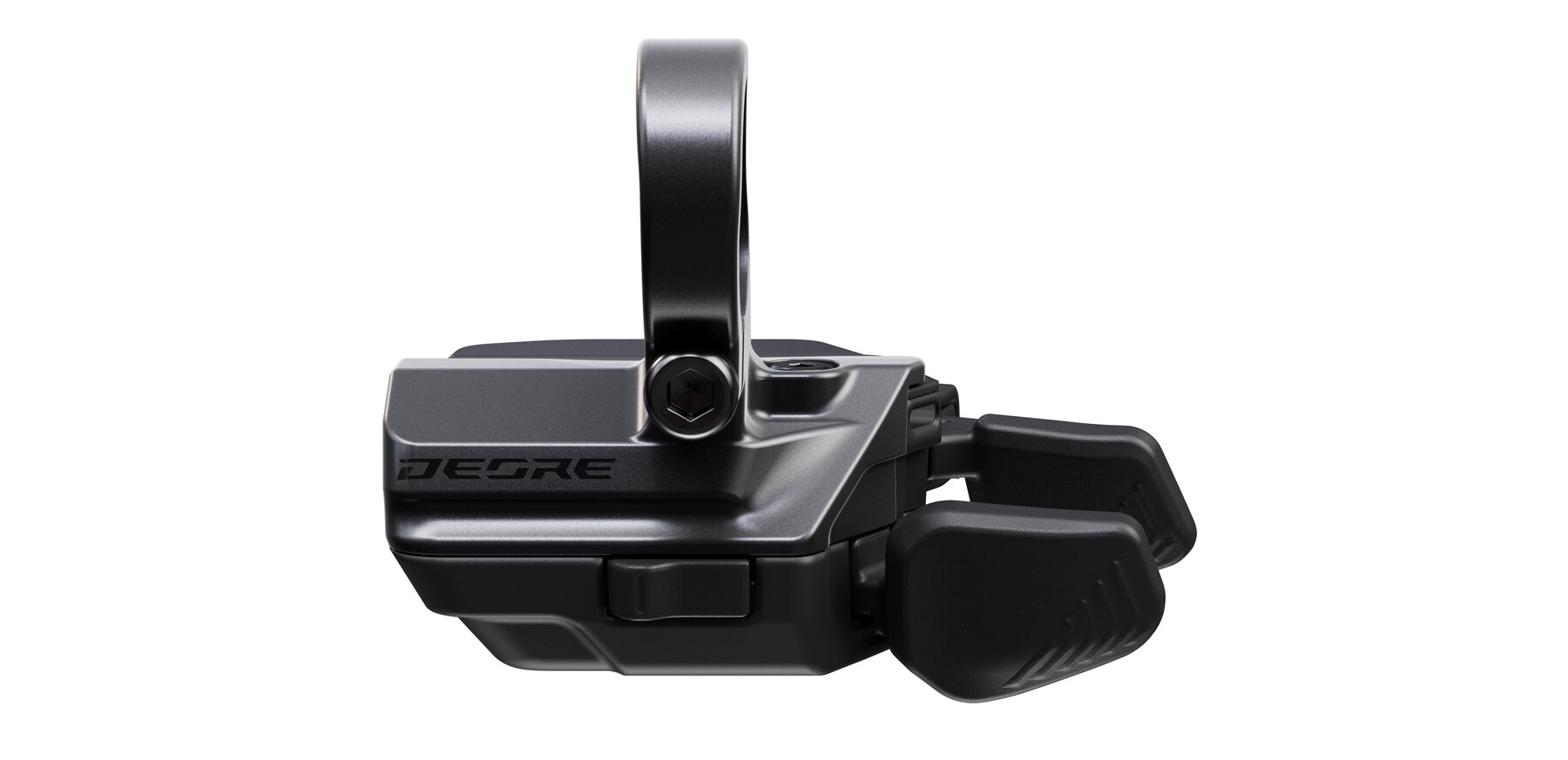
XT Di2 Cassettes — Overview
XT M8200 Cassette
- MSRP: $195
- Gearing Options: 10-12-14-16-18-21-24-28-33-39-45-51 / 9-11-13-15-17-19-21-24-28-33-39-45
- Stated Weight: 463 g (10-51 version) / 426 g (9-45 version)
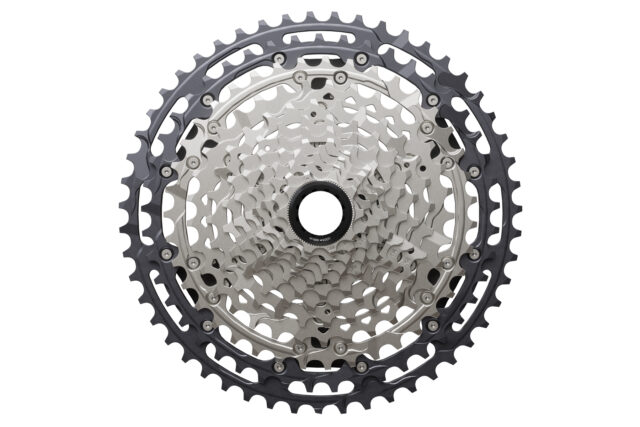
As with XTR, Shimano is offering the new XT cassette in two different versions. However, unlike the existing mechanical XT 12-speed group, the overall gearing ranges aren’t very different between the two. Since it’s the same story as the XTR cassette offerings, we’ll quote that review again:
The gearing on the standard 10-51 tooth cassette is unchanged from Shimano’s current 12-speed options, but the compact version now gets 9-45 gearing, rather than 10-45 as before. That, of course, produces higher gearing than the 10-51 cassette if used with the same chainring, but the overall range on the compact cassette (500%) is very close to that of the larger one (510%).
That means that the 10-51 and 9-45 cassettes produce very similar gearing if you run a four-tooth smaller chainring on the 9-45 one (e.g., a 32-tooth ring on the 10-51 cassette and a 28-tooth one on the 9-45). Shimano says that the compact cassette (and the shorter-cage derailleur that goes with it) saves a bit of weight, offers better chain control due to the shorter derailleur cage, and increases ground clearance both at the derailleur cage and the chainring (assuming you size the chainring to maintain similar gearing across both setups).
The potential downsides to the compact setup are that it won’t fit on every bike, either due to clearance at the dropout for the nine-tooth cog, or (more likely) at the chainstay if you’re running a small enough chainring to produce similar gearing to the 10-51 cassette with a normal sized chainring. Shimano also doesn’t make a chainring smaller than 28 teeth, so your options are limited if you want to replicate your preferred gearing via a sub-32-tooth chainring on a 10-51 cassette. Changing the chainring size that much will also make some changes to a given bike’s anti-squat behavior, though how significant (or not) those are will depend on the bike in question.
The construction of the new XT cassettes hasn’t changed all that much. Both versions still use aluminum for the two largest cogs and steel for the other ten. Shimano’s Microspline mounting standard carries forward unchanged, as does their Hyperglide+ tooth profile. Shimano has thickened the base of certain teeth slightly for improved durability, but from a shifting performance and chain-compatibility standpoint, there aren’t any changes of note.
Compared to the XTR cassettes, the new XT variants are notably cheaper and a bit heavier (463 g vs. 369 g for the 10-51-tooth options), due to the $500 XTR cassette utilizing aluminum for the three largest cogs, titanium for the middle five, and steel for the four smallest.
The 10-51 tooth XT cassette uses a standard lockring. There isn’t room for a standard cassette tool inside a 9-tooth cog, so the 9-45 cassette integrates the 9-tooth cog into the lockring and thus requires a special tool.
XT Di2 Cranks — Overview
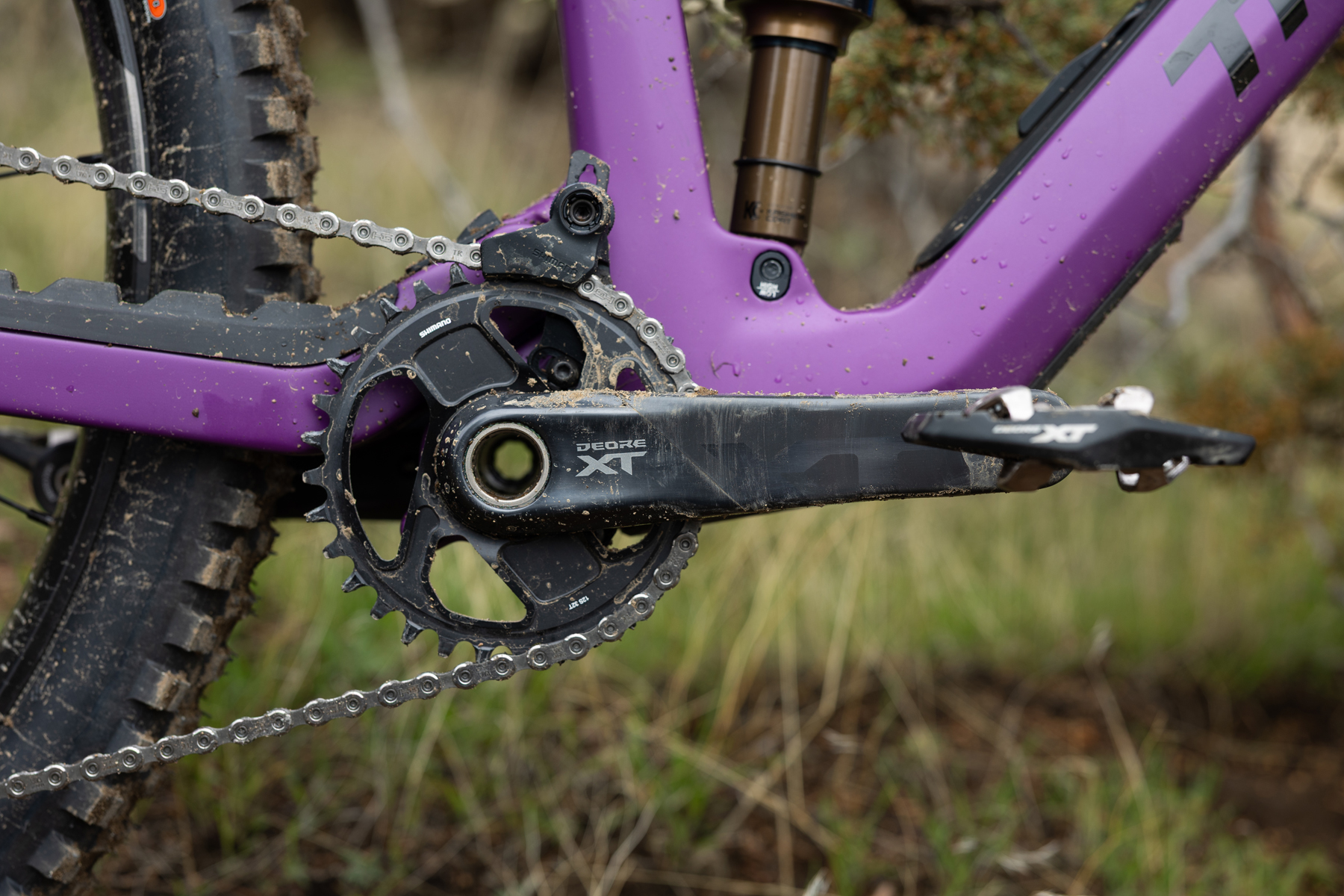
XT M8200 Crank
- Intended Use: XC / Trail / Enduro
- Lengths Offered: 160, 165, 170, and 175 mm
- MSRP: $190 (Crank Arms & Spindle) + $73 (Chainring)
- Stated Weight: 588 g (175 mm arms & spindle + 32 tooth chainring)
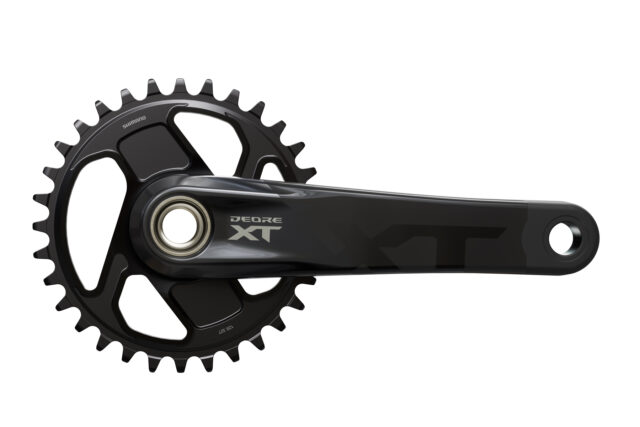
Unlike the XTR crank, which is offered in separate XC and Trail / Enduro options, the XT crank comes in a single version.
As per usual for Shimano’s higher-end offerings, the new XT M8200 crank uses a hollow forged-aluminum construction for the arms, and a 24mm-diameter steel spindle. Shimano’s familiar pinch bolt mounting interface on the non-driveside arm remains as well, and they haven’t changed their existing direct-mount chainring standard, either.
The prior-generation XT crank was offered in a few different versions to suit different chainlines, but Shimano has gone to a 55 mm chainline with the new Di2 groups, streamlining their crank offerings in the process. A new zero-offset chainring with similar design language to the new XTR one handles that change (the standard version of the prior-gen crank got a 52 mm chainline from a 3 mm offset ring). The new XT crank is offered with 28- to 36-tooth chainrings.
The XT M8200 cranks all get a 176 mm Q-factor, which is the same as the Trail / Enduro-oriented XTR M9220 crank, but wider than the 168 mm Q-factor on the XTR M9200 XC crank. The new XT cranks are offered in 160, 165, 170, and 175 mm lengths.
Chains
Deore & XT Di2 Upgrade Kits
Since the new Di2 derailleurs work with Shimano’s existing Hyperglide+ 12-speed parts (the 11-speed Linkglide eMTB ones excepted), Shimano is offering Di2 Upgrade Kits with the minimum parts needed to convert an existing 12-speed mechanical group to wireless shifting.
The Upgrade Kits include a Di2 shifter and derailleur, a battery and charger for the derailleur, and a new chain quick link, since quick links aren’t officially reusable.
XT M8200 Di2 Upgrade Kit
- MSRP: $860
- Includes: Derailleur, Shifter, Battery, Charger, & Chain Quick Link
Deore M6200 Di2 Upgrade Kit
- MSRP: $675
- Includes: Derailleur, Shifter, Battery, Charger, & Chain Quick Link
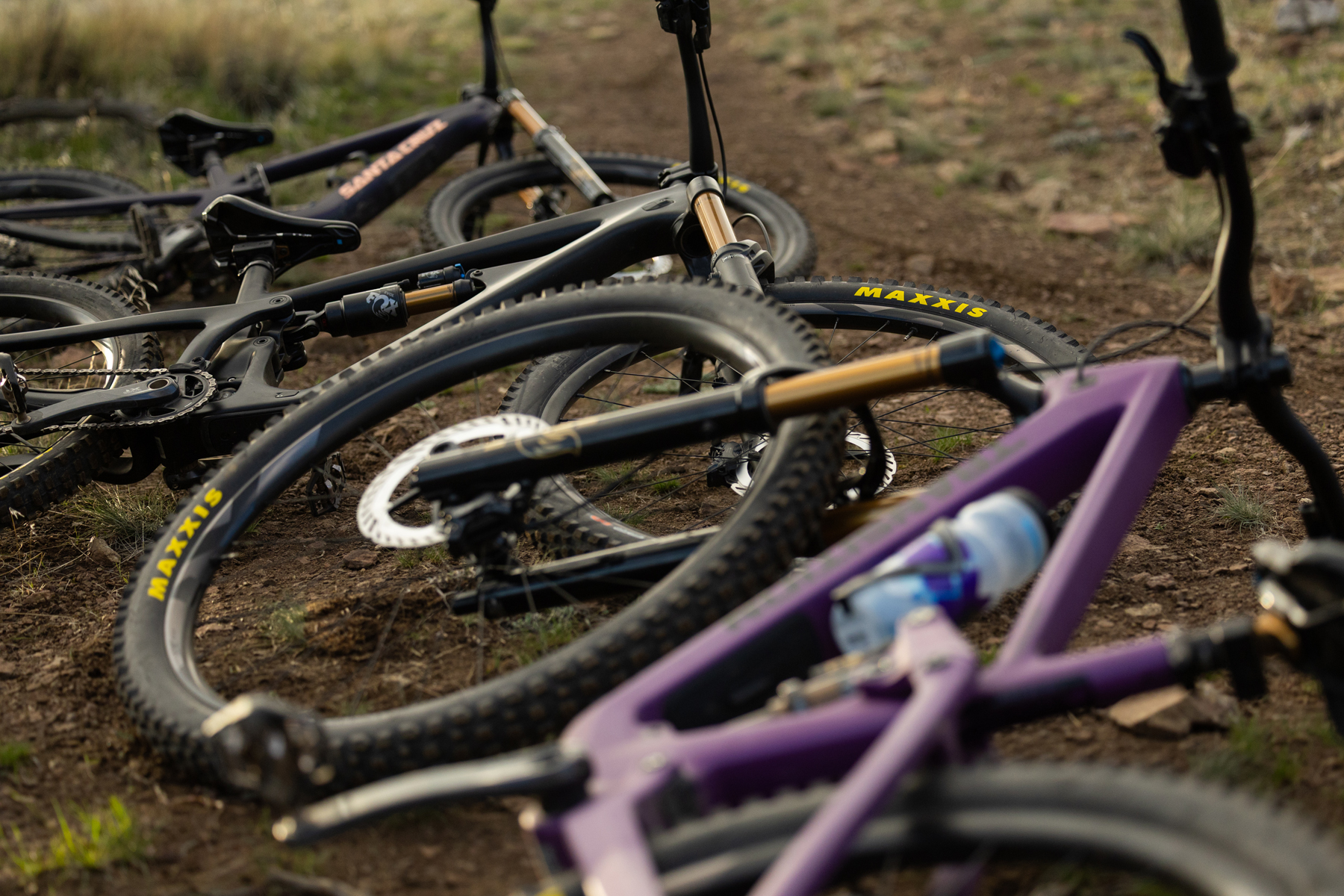
XT M8200 Wheels
- Intended Use: Trail / Enduro
- MSRP: $250 (front) / $325 (rear)
- Stated Weight: 931 g front / 1,052 g rear (29’’)
- Versions Offered: 27.5’’ or 29’’ diameter | 15 x 110 mm Boost front / 12 x 148 mm Boost rear only | Microspline freehub | Centerlock brake rotor mount
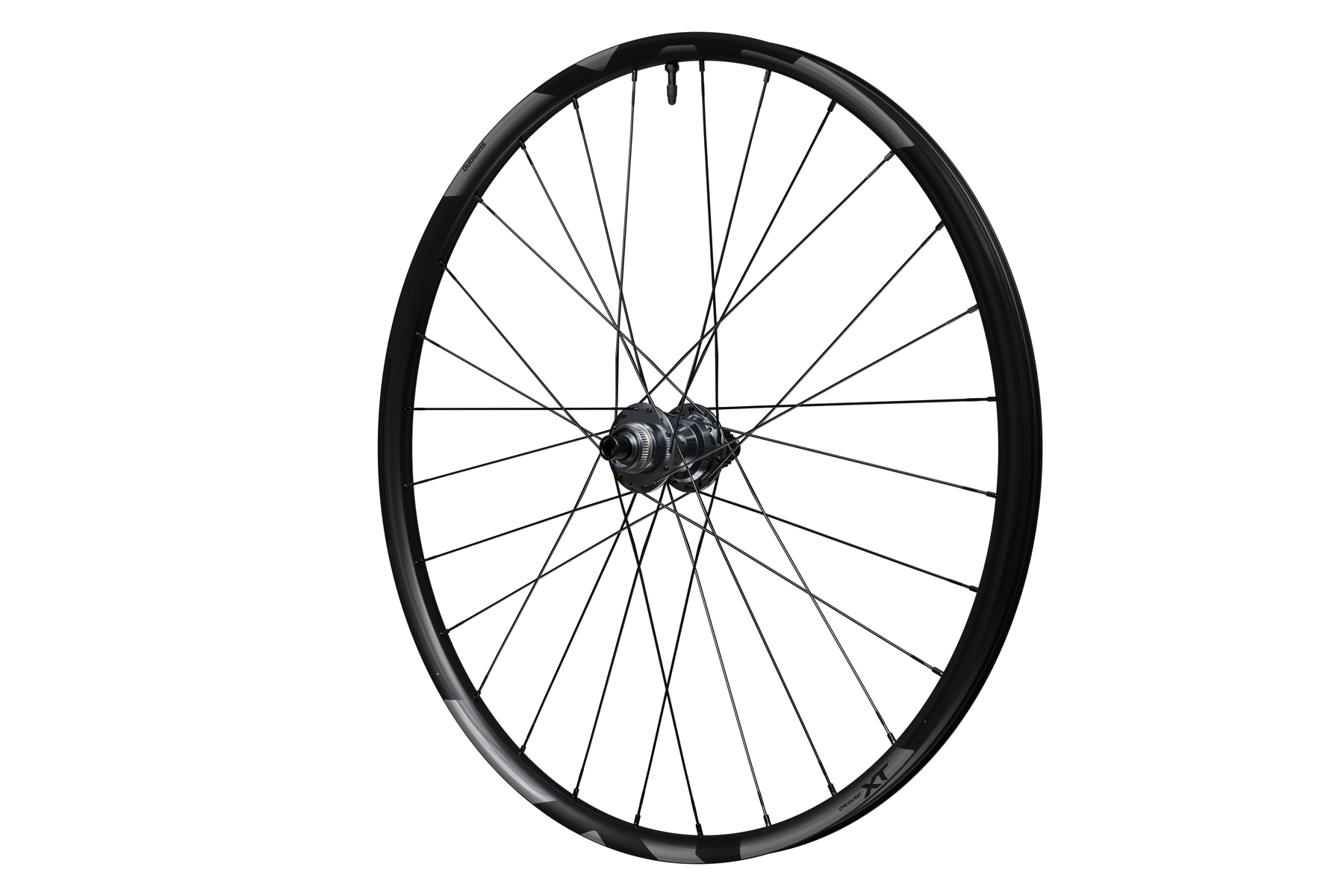
XT M8210 Hubs
- Versions Offered: 110 x 15 mm front / 148 x 12 mm rear axle spacing | Centerlock rotor mount | Microspline driver | 28- or 32-hole drilling
- MSRP: $75 (front) / $180 (rear)
- Stated Weight: 130 g (front) / 251 g (rear)
The XT hubs are also offered individually if you’d like to build your own wheels around them. The XT wheelset uses 28-hole versions of the hubs, but 32-hole hubs are also on offer if you buy the hubs on their own, again for J-bend spokes.
The XT hubs cost roughly half what the XTR ones do, but are only marginally heavier — and quite notably light, especially given their price point.
Both use the same freehub mechanism, but the XTR hubs use higher-end stainless steel bearings instead of the plain steel ones in the XT hubs. The XTR rear hubshell gets a more intricate design as well, which allows Shimano to use a smaller diameter non-drive-side flange that’s spaced farther apart from the drive-side one than the XT hub. Shimano says the XTR hub builds a stronger wheel, but its more complex hubshell also costs considerably more to make.
Some Questions / Things We’re Curious About
(1) How similar (or not) is the shifting performance of the new Deore and XT Di2 groups compared to that of the XTR version?
(2) What about long-term durability? Does the shifting performance of the more affordable options degrade more quickly than that of the XTR version as things wear, due to their more basic construction?
(3) Who is the compact 9-45 cassette option going to work best for, and who should stick with the 10-51 version? We’ve got a lot of time on the 10-51 version of the XTR group, but are keen to find out how the different gearing options compare, especially given that they’ve got almost the exact same overall range.
Bottom Line (For Now)
We’ve been very impressed with Shimano’s flagship XTR Di2 group, and it’s exciting to see more affordable versions show up so quickly after the XTR launch.
The Deore and XT Di2 groups still aren’t cheap — wireless electronic shifting commands a substantial price premium over mechanical — but the popularity of SRAM’s AXS wireless groups shows that there’s real appetite for electronic shifting, and it’s great that there’s now more competition in that space.
We’ve got an XT Di2 group on the way for review soon, so stay tuned to see how it stacks up against the XTR version.
Flash Review: Our Initial On-Trail Impressions
BLISTER+ members and those who purchase our Digital Access Pass can check out the Flash Review below to read our initial on-trail impressions. Get our Digital Access Pass to view all our Flash Reviews and Deep Dives, or become a BLISTER+ member today to get access to that and a LOT more, including the best worldwide Outdoor Injury Insurance, exclusive deals and discounts on skis, personalized gear recommendations from us, and much more.

Flash Review: Shimano XT M8200 Di2 Drivetrain and Brakes
Update 8.12.25: We’ve started spending time on the 9-45 tooth cassette version of the new Shimano XT Di2 Drivetrain, and have some thoughts on how it stacks up against the standard 10-51 tooth version.
Blister’s Flash Reviews and Deep Dives are accessible to those who purchase one of our paid subscriptions
To get our comprehensive Deep Dives and our initial, unfiltered reports on new gear, become a member and receive many other services, deals, and discounts.
If you’re already an active member, please log in.
(If you’re already logged in and a member in good standing and seeing this message in error, please refresh this page in your browser.)

Only a $50 difference between the XT and Deore shifters, and a lot of features lost on the latter. I’d say the XT is a better value.
One would think the “kits” would offer cost savings but all you get is a “free” quick link.